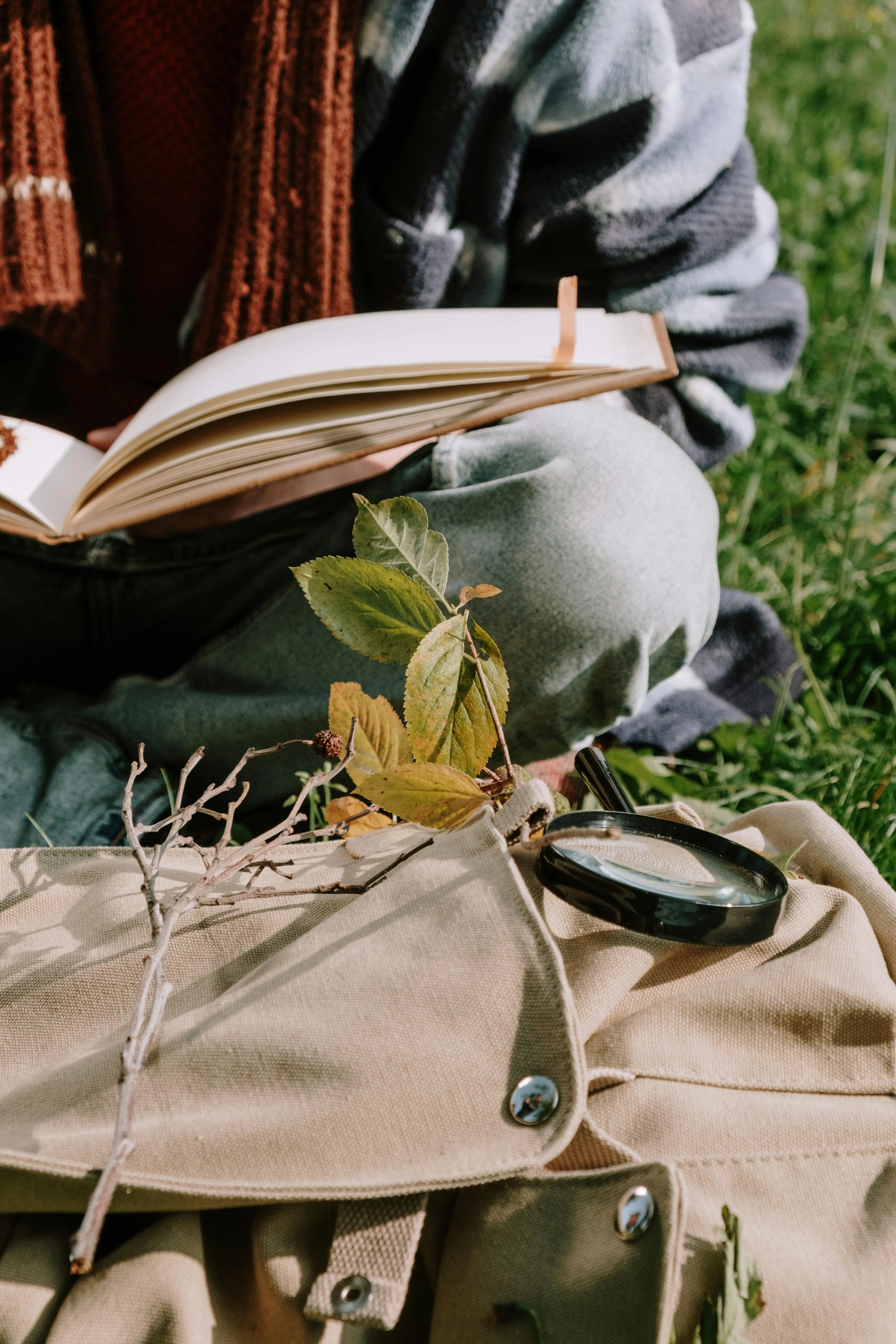
Be a Land Steward.
Sign up for Greenhouse Gases -
a weekly-ish newsletter that will teach you the science behind regenerative gardening, with action steps to help you make a difference in your backyard.

Sign up for Greenhouse Gases -
a weekly-ish newsletter that will teach you the science behind regenerative gardening, with action steps to help you make a difference in your backyard.
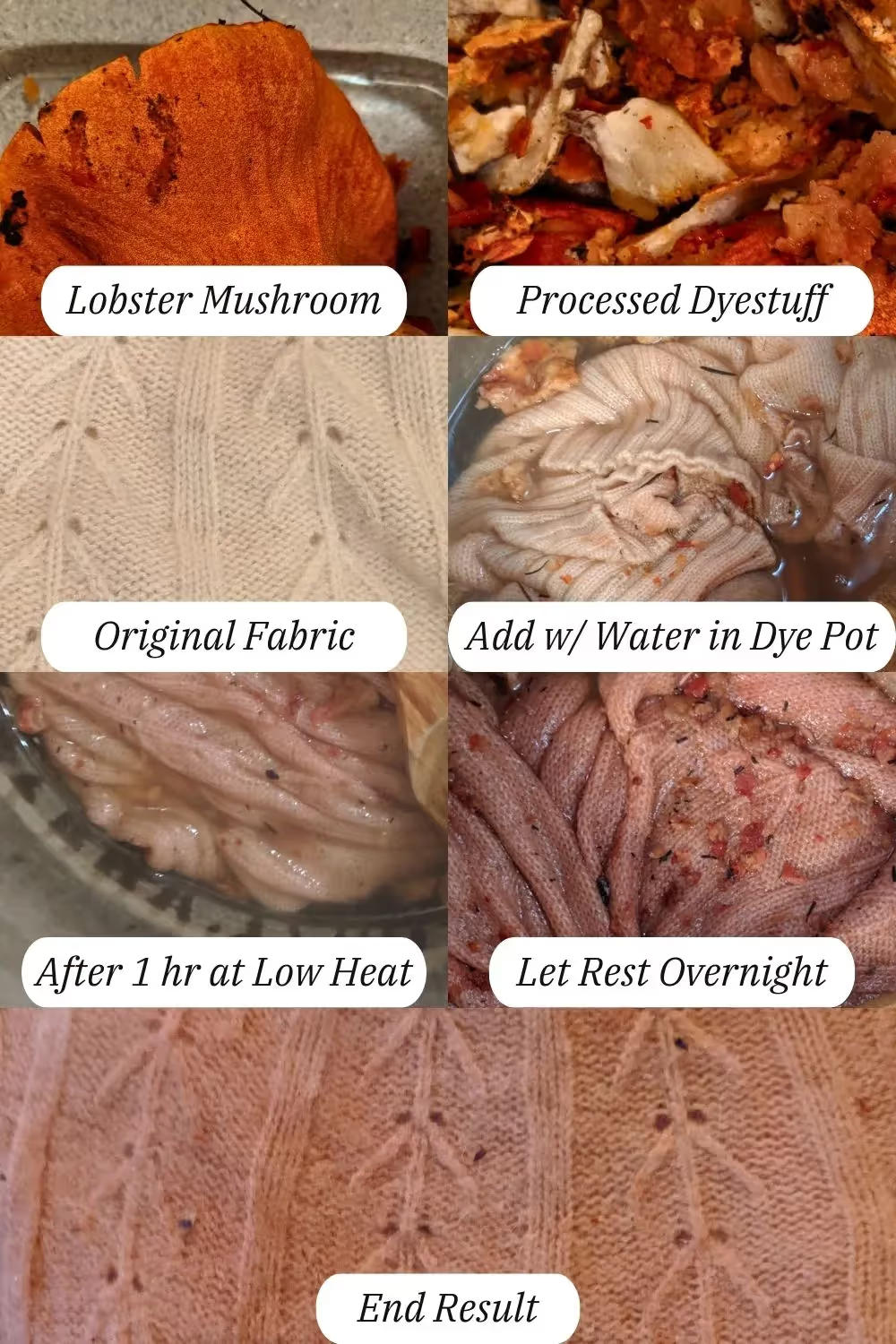
Aside from the obviously named Dyer’s Polypore, I didn’t really realize that mushrooms (and lichens!) have been traditionally used to dye fabrics since time immemorial. For example, the Vikings are known to have dyed fabric with partial fungi - lichens! Dyeing fabric with mushrooms has been popularized in recent years by Miriam C. Rice and Dorothy Beebee in the 70’s.
Introduction to Lobster Mushroom Dye
A few weeks ago, I came across a beautiful online resource for visualizing the range of color that mushrooms can provide: The Mushroom Color Atlas. As I was browsing through the color samples, I fell in love with the range of pinks, corals, and peachy-orange that could be yielded from the Lobster Mushroom.
I did a little research and learned that the Lobster Mushroom, or Hypomyces lactifluorum, is technically not a mushroom. Instead, its a fungus that parasitizes mushrooms in the Russula (Brittlecaps) and Lactarius (Milk-cap) genera.
I have seen a few Russula mushrooms around my yard, but never have been so lucky as to stumble upon a Lobster mushroom.
Instead, I learned about them vicariously by watching Wildcraft Dyeing and Erica Z play with dye projects with this fungi.
Surprise Foraging for Lobster Mushrooms
With some sort of divine timing, I went on a hike this past weekend in an area where mushroom foraging for personal use was allowed without a permit.
Now, truth be told I was hoping for Dyer’s Polypore. But in chatting with other hikers I learned that there were some “beyond prime” lobster mushrooms nearby.
They were disappointed, but I was delighted - this would be perfect for a dye project!
In true nerd fashion, I told them about how older lobster mushrooms as perfect for botanical pigment, and they encourage me to go get them!
And so I did. It took me a while to find them, but eventually they appeared. It was a mixed conifer forest, and the specimens were all along the edges of woodland and path or even in forested areas next to pavement.
Lobster mushroom indeed does smell fishy, in case you were wondering. I placed them in the refrigerator when I got home so as not to have them get too funky, but the scent in my refrigerator prompted me to transform them into a dye project the next day.
Here’s how I transformed these orange beauties into a dreamy and delicate pink color on cashmere.
Mushroom Dyeing Lifecycle
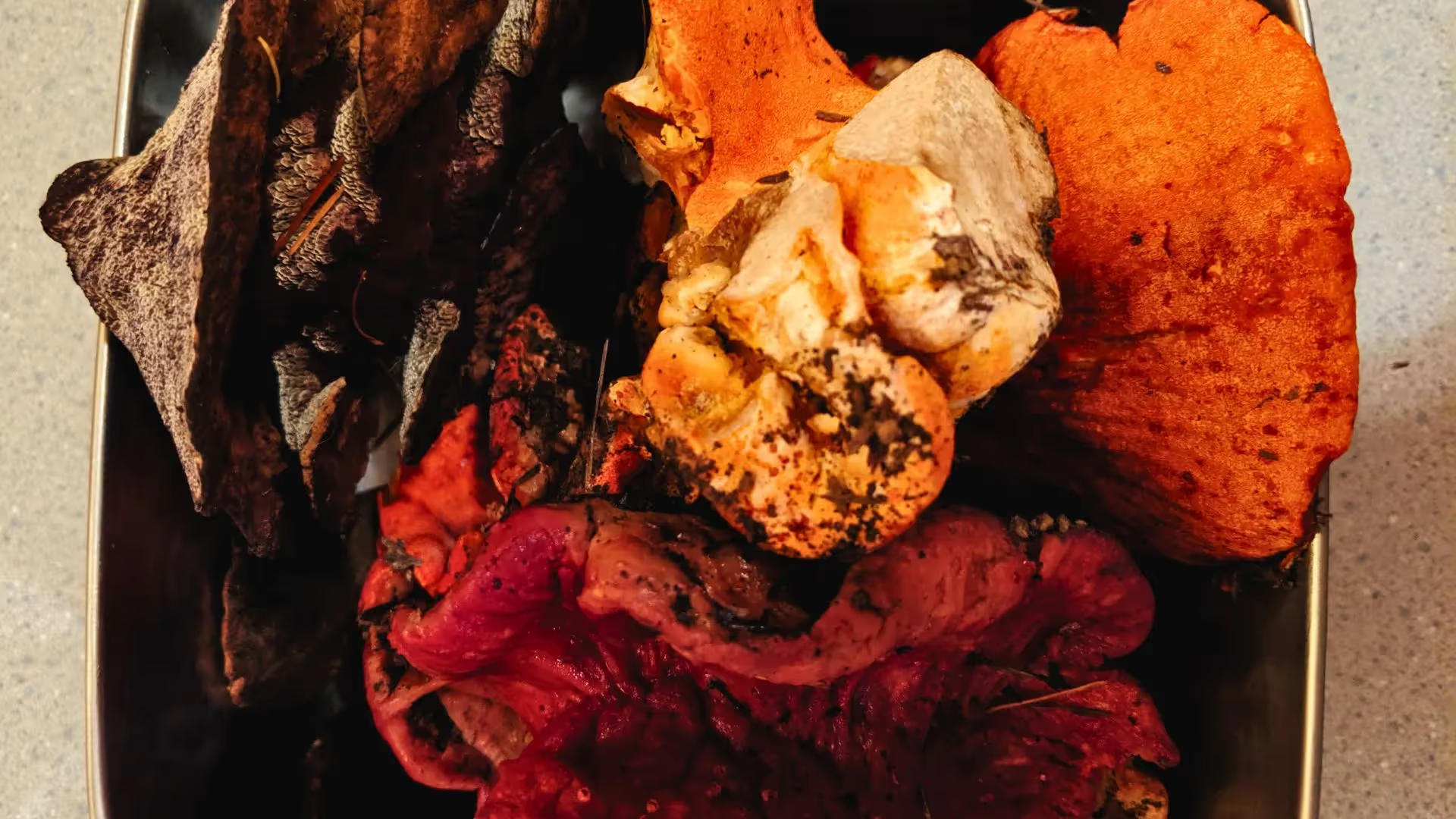
→ Did you know? Technically, H. lactifluorum is a fungus that parasitizes another mushroom. In the end, this study found that the DNA of the original mushroom is hardly present!

1. Process your Mushrooms if you haven’t already
2. Fabric Prep
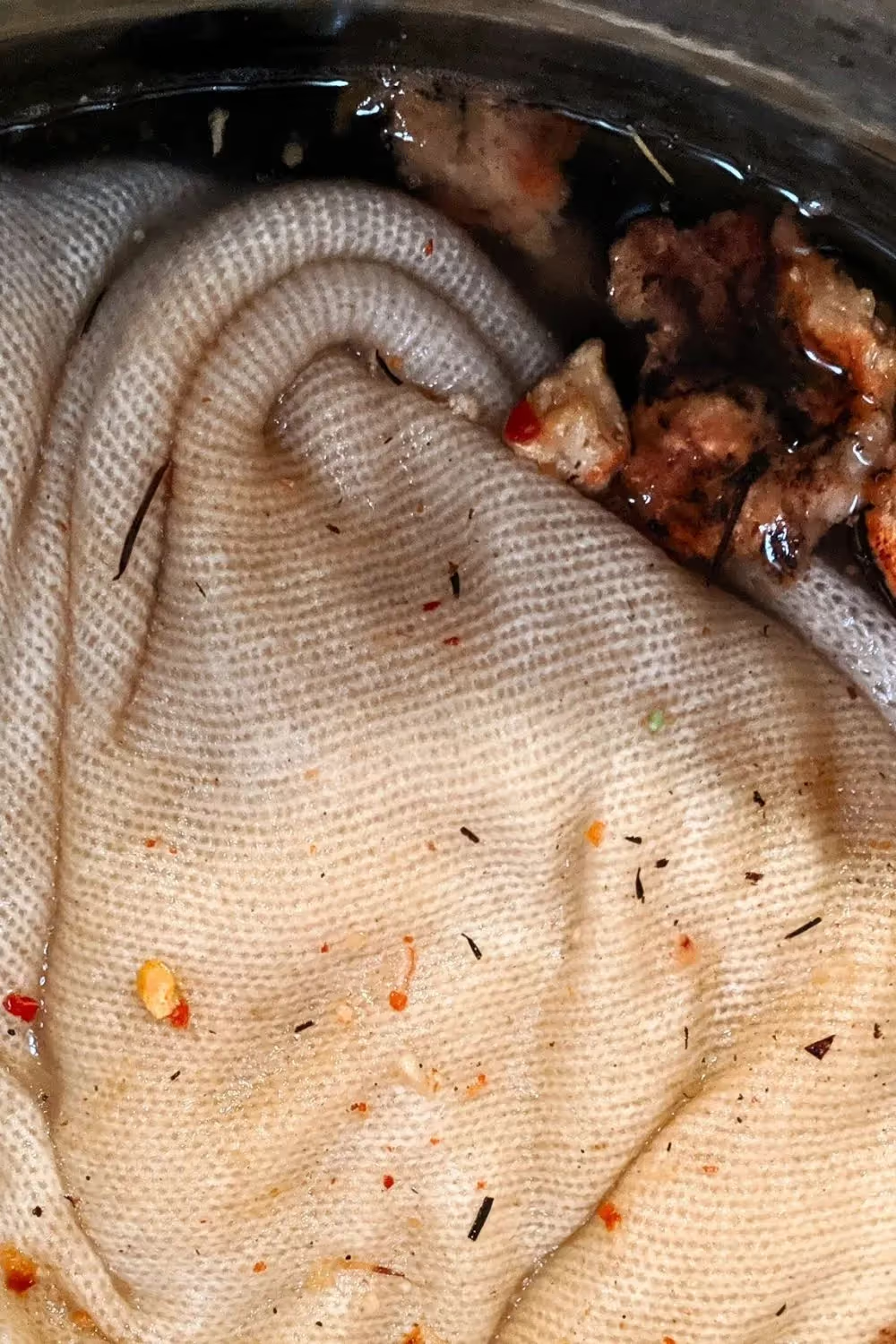
3. Add your lobster mushroom skin + fabric to your dye pot and cover with water
4. Turn on low heat on the stove

5. Light Pink Stage

6. Slightly Deeper Pink
7. Rinse-Dry-Soak
8. Rinse Rinse Rinse
The End Result!
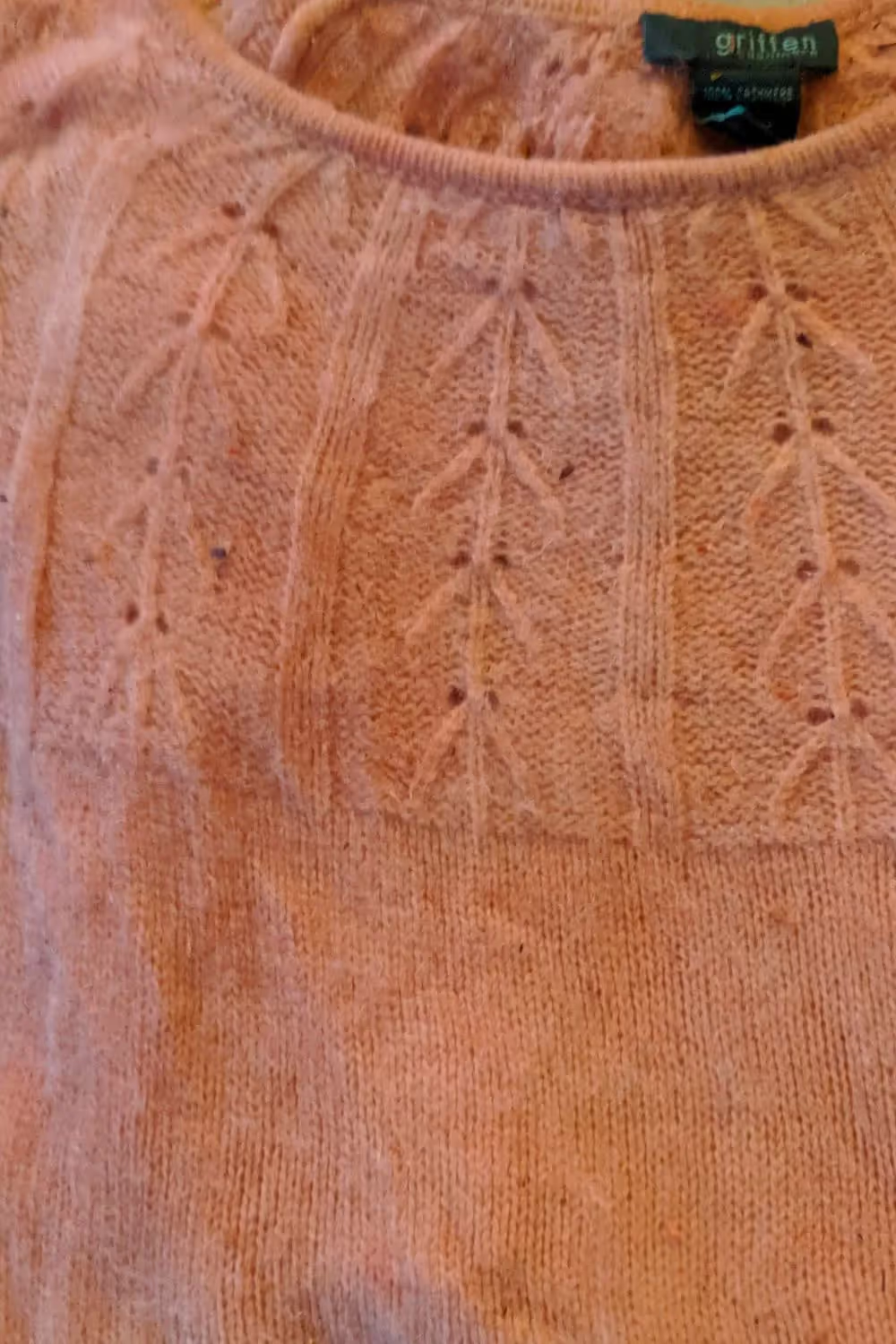
→ Did you know? Mushrooms possibly evolved to have different pigments to impact taste (and thus, increase lifespan) or even as a natural sunblock. The pigments might also act as a defence against other harmful organisms (Phipps Conservatory).
Color Unevenness:
Dyestuff Residue:
Issues with Dye Uptake on Cotton
Mushrooms offer a range of vibrant colors, thanks to their natural pigments. Some of these pigments, when they interact with protein fibers like wool or silk, are able to bond to the fabric.
What’s even better about dyeing with mushrooms is that they are acidic. This acidity can support the adherence of the pigment to the fiber, in a similar way to mordants.
While the advent of modern synthetic dyes was a boon for the fabric industry, it was and still is exceptionally damaging to the environment.
According to a study published in Biotechnology Research and Innovation, effluents from the dye process make up 80% of the fashion industry’s environmental footprint.
Fabric dyes have several negative impacts to surrounding waterways.
These include:
In total, CNN reports that one-fifth of global water pollution owes its source to textile dye.
A more sustainable solution would be to work with natural plant dyes from plants and mushrooms.
Finding plants that can adhere to the fabric long-term without mordants - typically made from metals - is even more eco-friendly.
This is why I choose to dye without pre-mordanting my fabrics with alum. I’m also very interested in botanical dyes that do not need a mordant. For example, both indigo and lichen are known for their ability to dye textiles without the addition of a metals like alum.
Bio-mordants are also something that I hope to explore, as outlined in this scientific review published by Environmental Science and Pollution Research in 2024. This is an innovative approach that supports the health of not only the planet, but the dyer too.
Check out my guide to sourcing clothes and fabric for dye projects!
As I shared for this project, I sourced my cashmere sweater from ThredUp, an online thrift shop.
After stepping into the world of mushroom dyeing, I’ve connected with a craft intertwines history, science, and the simple joy of colos. From the unexpected thrill of foraging to the satisfying process of seeing the first blush of color on cashmere, this experience highlights the beautiful, eco-friendly alternatives nature offers.
Whether you're a passionate crafter, a sustainability enthusiast, or just mushroom-curious, I hope this exploration inspires you to try natural dyeing.
The Mushroom Color Atlas: Lobster Mushroom
Video Tutorials: Wildcraft Dyeing and Erica Z